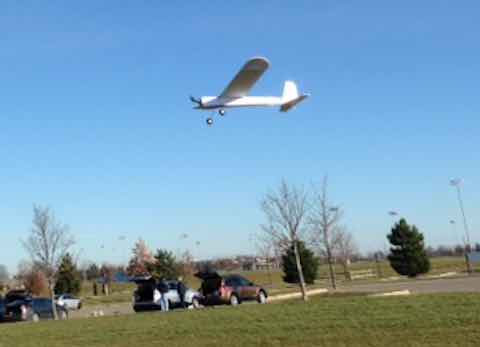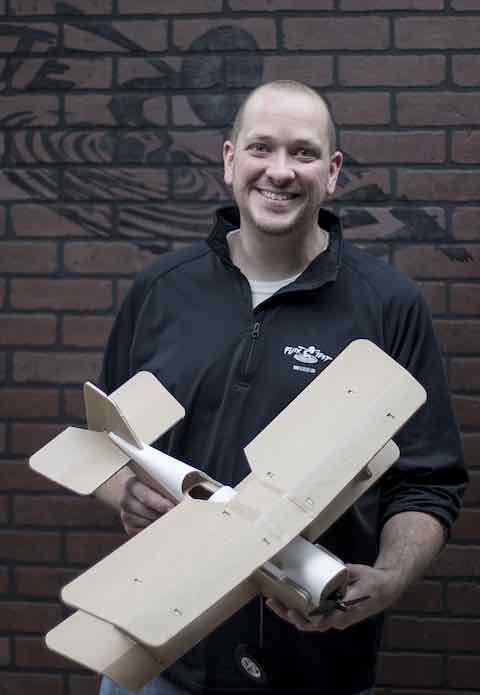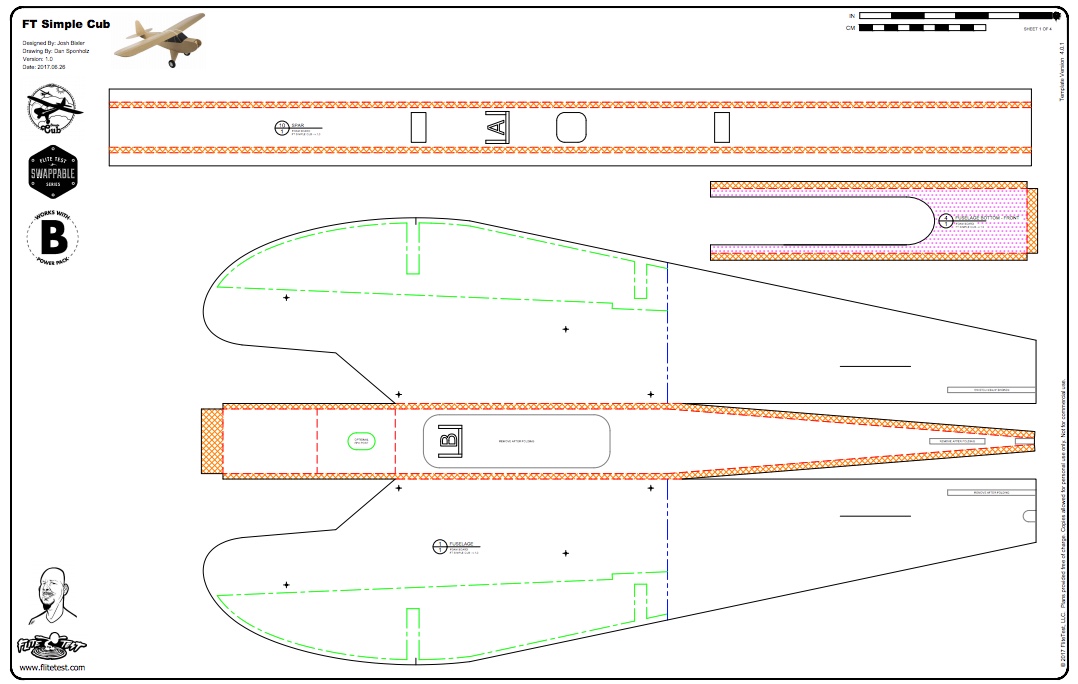 |
Flying High With Electric Power!
The Ampeer ON-LINE!
Fly the Future - Fly Electric! |
|---|
Site Table of Contents
| President: | Vice-President: | Secretary-Treasurer: |
| Ken Myers | Richard Utkan | Rick Sawicki |
| 1911 Bradshaw Ct. | 240 Cabinet | 5089 Ledgewood Ct. W. |
| Commerce Twp., MI 48390 | Milford, MI 48381 | Commerce Twp., MI 48382 |
| (248) 669-8124 | (248) 685-1705 | (2480 685-7056 |
 | ||
| Board of Directors: | Board of Directors: | Ampeer Editor |
| David Stacer | Arthur Deane | Ken Myers |
| 16575 Brooklane Blvd. | 21690 Bedford Dr. | 1911 Bradshaw Ct. |
| Northville, MI 48168 | Northville, MI 48167 | Commerce Twp., MI 48390 |
| (248) 924-2324 | (248) 348-2058 | (248) 669-8124 |
| EFO Flying Meeting: Sat. & Sun., July 14 & 15 Time: 9 a.m.
IT'S THE 34TH ANNUAL MID-AMERICA ELECTRIC FLIES! Place: Midwest RC Society 7 Mile Rd. flying field | ||
| Special Events This Year for NCM (Not Conventional Materials) Aircraft at the Mid-America Electric Flies Ken explains what NCM type aircraft are and notes two of his latest of this type. | Who and What is Flite Test? Ken tries to explain this innovative organization and their goals. |
| A Win for Keith Shaw at Toledo 2018 Keith Shaw describes his 2018 Win at the Toledo Show | The April 2018 EFO Meeting Notes and comments from this meeting |
| Comments Regarding the Wing Cube Loading (WCL) Level Article in the June Ampeer Three Ampeer readers share their thoughts and questions about this article. | Upcoming 34th Annual Mid-America Electric Flies 2018 Great Event Announcement |
Traditionally, model aircraft airframes have been mostly constructed from balsa wood, plywood, spruce, fiberglass and sheeted, hot-wire cut foam wings. For the purposes of this meet, NCM airframes are mostly constructed from not conventional materials i.e.; sheet foam, foam board, cardboard, block foam, foam insulation material, poster board, etc. "Examples of the types of planes that represent typical NCMs can be found at;
RC Groups has a forum titled "Foamies (Scratchbuilt)" and plans for these types of aircraft can be found there. Ken Myers' NCM projects for this year include Flite Test's Simple Cub and his self-designed RUA 2-4-10 RC trainer. 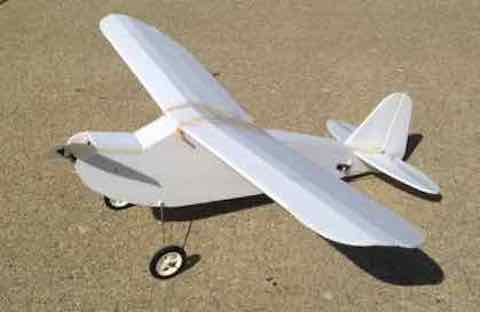
Ken's Flite Test DIY Simple Cub
We are inviting those of you who've become involved with the hobby, through building and flying NCM aircraft, to come and join us for two days of fun, friends and flying at this years' 34th Annual Mid-Am. By Ken Myers "This article is based on a presentation I gave to the Midwest RC Society at their April 2018 meeting. Flite Test is a...
Flite Test (FT) is a mindset and a new paradigm to get people into the hobby of BUILDING and flying RC aircraft. Highlights from the Flite Test Mission Statement include, "Flite Test was created for people passionate about flight. ...create a show for the people that build and fly planes ... The goal is to develop a creative outlet... Flite Test is designed to empower our audience. We hope to entertain, educate and elevate ... with quality content." The word 'show' implies video. The videography, editing and content are first rate in every way. The following 12 minute video demonstrates the video quality and fun involved in their videos.
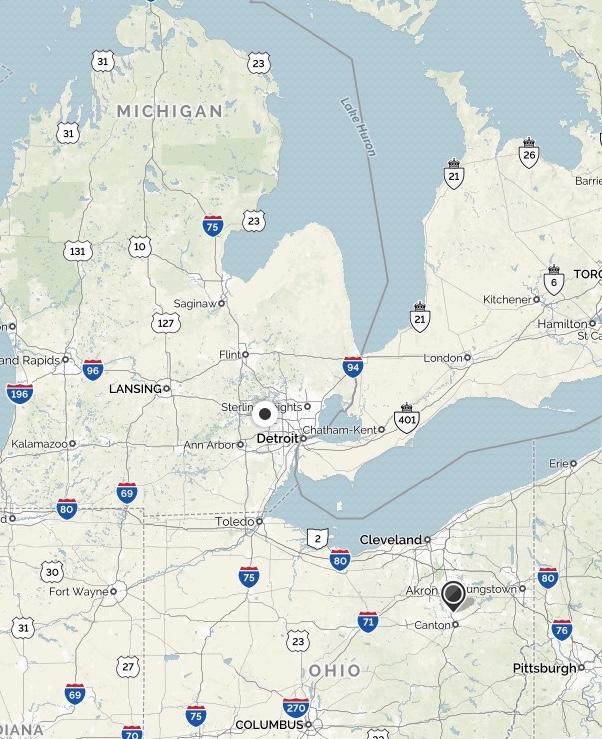
6050 Highline Avenue Northwest, North Canton, OH 44720 (It is the black circle in Ohio, as shown on this map.) What is Their Goal? It appears that their goal is to expand the number of people entering the RC hobby of building and flying RC aircraft.
They provide FREE plans/templates of their aircraft online at their Web site. The plans/templates are in Adobe Acrobat .pdf format. 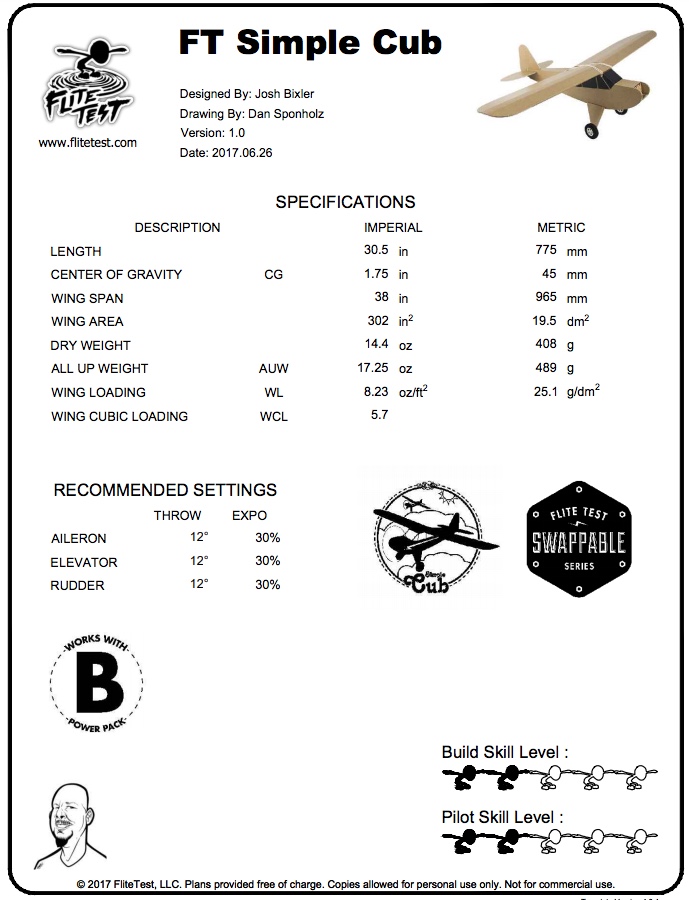 All of the newer plans also have a specifications sheet for the aircraft. Flite Test provides build videos of all of their designs for FREE on YouTube. 1. Their designs are created using inexpensive materials including Adams foam board (AKA Dollar Tree Foam Board or DTFB, bamboo meat skewers, and other repurposed household items.) 2. They recommend, and provide for purchase in their store, a limited number of specific power systems for their designs. This helps in making the selection of a power system simple and affordable for the person just starting into RC planes. 3. They provide foam board, laser cut, kits of their models, through their store. The kits allow their models to be easily constructed by the first-time builder. The kits usually include all of the items needed for the airframe. Occasionally, wheels are extra, but not always. 4. Through their store, they can provide all of the items needed to complete the plane, including power systems, radio systems, tools, adhesives and other items needed to assemble the model. Most Popular Videos Uploads RC Planes - Beginner Series which includes; Top 5 Beginner RC Planes, Choosing a Plane, Basic Aerodynamics, R/C Control System, Launching & Landing, Flying Your Plane, Power System, Batteries & Safety, Transmitters, Crashing and Repairing and Aerobatics. Also, the Beginner Series teaches how to build and fly a model plane. These instructional videos lead the viewer towards a successful first RC flight. Crazy Bush Plane Adventures Crazy Builds DJI Acrobatic Ride Flite Test Planes 1.They have sponsored at least two fly-ins every year with hundreds of pilots and thousands of spectators. From their Web site: "In 2017 we held three events in California, Ohio and Florida attracting 10,000 attendees and over 2,500 pilots. We are excited to announce two more dates so far in 2018." The Immediate Future for Flite Test Includes Their Events for 2018. The upcoming events for 2018 are discussed in this YouTube video. 2. They stress and promote family fun and family values. 3. They stress and promote FUN with RC planes all of the time. This YouTube video shows Josh and Josh discussing the future home of Flite Test, which also includes their very own airpark that they will be sharing with the public. They did a "fund me" style campaign to get the seed money for the project of turning a golf course into the future site. Not only did they reach their first goal, but also a second for their future "air park" and home for Flite Test. Some Printing Problems With the Plans Their beautifully executed FREE DIY Plans/Templates, when printed on 8-1/2" by 11" printer paper, are more tedious than they need to be to tape together. Because of the way they are designed to print, they waste too much paper and require more 'trimming' than necessary. (Preview on a Mac or the FREE Adobe Acrobat Reader DC on the Mac or PC can be used to print the A tiled plans. The A tiles are designed to be printed on standard US printer paper.) The smaller FT designs tend to weigh more than the same design made from 'conventional' materials. The extra weight causes them to have a higher wing loading, and to be a bit more difficult to fly, when compared to the same design built from 'conventional' RC model materials. As the DFTB planes get larger, they do tend to weigh about the same, and have about the same wing loading, as those built from 'conventional' materials. With so many people working on the design and build aspects of a given model, it is inevitable that there are discrepancies between the final version of the design, the build video and the final specifications. I noted the following discrepancy during my latest FT build, the Simple Cub. There is a control throw gauge as part of the plans for the Simple Cub. It has two markings on it L and H. 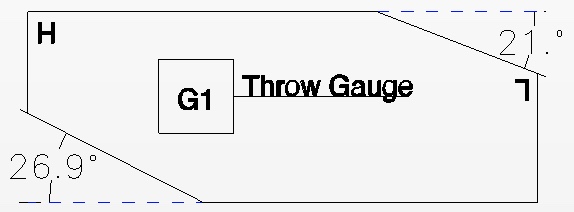 Blue dashed lines were added to the Throw Gauge CAD drawing to show the measured angles. L (low) is 21 degrees and H (high) is 26.9 degrees. The specification sheet, shown previously in this issue, indicates that the control throw, for all of the movable surfaces, should be 12 degrees. The FT Store page for the laser cut kit of the Simple Cub also indicates that the control throw should be 12 degrees. In the build video for the Simple Cub, Josh Bixler notes how to set up dual rates using the Throw Gauge. The discrepancy is that neither of the angles measured by the Throw Gauge are 12 degrees. Editorial Comment/Opinion by Ken: From firsthand experience, flying this plane, I can state that 12 degrees is plenty of control throw for all the moveable surfaces, especially for a no or low time pilot trying to fly this plane unassisted. From statements regarding the FT Simple Cub on both RC Groups and in the Flite Test Forum, it has become apparent that this particular discrepancy is indeed causing problems for no and low time pilots, and that is too bad. Some of FT's plane designs don't fly as well as they could and that might disappoint a person new to the hobby. This link points to a Web page where I have video links to 142 Old Fogey flights. There are 112 failures, in my opinion, and 29 successes. Don't believe it? Please check out the link to the videos and decided for yourself. Flite Test's goals, mission, people and ideals are exemplary. They are great ambassadors to the world for this hobby. They have put social media to work for this hobby more than any other organization. The amount of hours they have poured into this hobby are a true labor of love. I have nothing but the very highest respect for the team and Mr. Bixler. A Win for Keith Shaw at Toledo 2018
I did not try to finish my Toledo project this year because of too much time lost for the Death Valley Adventure. I went down to the Toledo show on Friday as a "civilian" just to enjoy seeing friends and looking at all the new widgets. The turn out in my usual competition class was quite light and I was worried that there wouldn't be enough entrants to validate the event for next year. Friday night I looked over my fleet to see if there was one that I could enter just to help fill out the class. The show rules forbid entering any plane that has already won, so that eliminated a good number. While looking over the possible candidates, I realized that I could finally enter my Bugatti (2004 project) in scale. The judging rules require that the real plane had to have flown. The Bugatti racer was built in 1939 to set the world's speed record, but never flew because of the beginning of WW2. It languished in storage as it passed from owner to owner, until it was finally restored about 2002 and placed in the EAA museum in Oshkosh, Wisconsin. Because it never flew, I could not enter my model when it was new. However, a few years ago a fellow in Oklahoma started building an exact replica designed to be flown. Earlier this year it did successfully fly, but sadly crashed on its third flight (mechanical failure in the counter-rotating gearbox), with a total loss of the plane and death of this brave pilot. All I really had to do was to give the plane a good cleaning, tighten up a few wrinkles in the covering, and re-configure my documentation to be a model of the the flying replica. Truly, I did enter it just to enlarge the pool in that scale class. I was awarded FIRST place in Non-Military Scale. Not bad for a 14 year old plane with over 400 flights on it at many dozens of airshows. 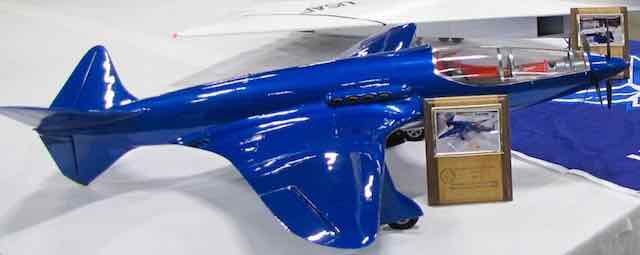 Enclosed is a photo of the Bugatti and the First Place Plaque. I'm very happy that it was well liked, by both the spectators and the judges. Keith The April 2018 EFO Meeting The well attended April 11th meeting was held at Ken Myers' house. Everyone congratulated Keith on his win at Toledo. Keith brought along his plaque to share with the members present. He also spent some time discussing the original Bugatti R-100 and the ill-fated replica. 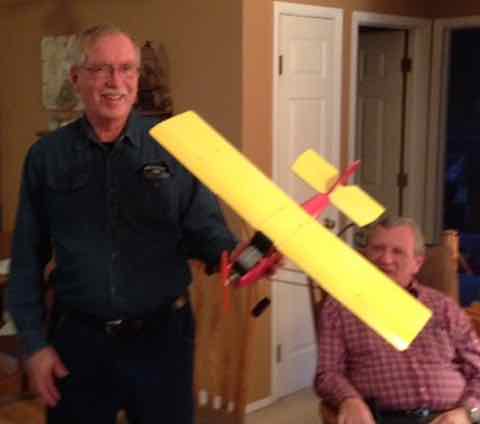 Richard Utkan, EFO vice-president, shared his Flite Test scratch-built Pietenpol. The model is part of FT's Mini series. It is also available at the FT Store as a laser cut, foam board kit. The instructional build video can be found on YouTube. 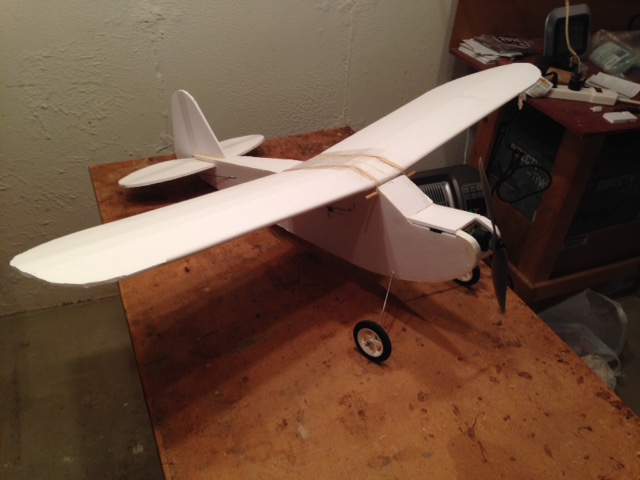 Ken Myers shared his 3-channel version of the Flite Test Simple Cub. Ken showed FT Simple Cub landing clips from several of the FT videos and other Simple Cub flying videos found on YouTube. The videos consistently showed the Simple Cub design flipping over onto its tail upon landing. He noted that he had moved the landing gear placement forward 5/8". The fuselage was passed around the circle of members. Before it returned to Ken, the rudder servo, which had been hot glued to the fuselage side had fallen off. Ken had not been sure about that type of mounting. 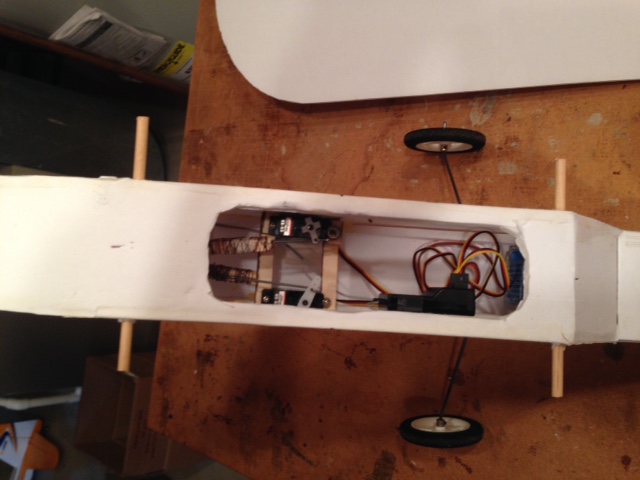 The following day he added rails across, and through, the fuselage sides and remade the 'traditional' pushrods from pushrod wire and 1/4" square balsa. The servos were attached to the plywood rails with screws. He had already used 'traditional' pushrods as he felt that the wire used by FT was too small in diameter and too flexible. The reason that the landing gear looks so far back in the photo is because the plane is tipped up on its nose for the photo. Ken's 3-channel version, with a 3S 1000mAh LiPo installed, weighed 18 ounces ready to fly. It has a measured wing area of 293 sq.in. yielding a WCL of 6.2, which falls within the park flyer level. Comments Regarding the Wing Cube Loading (WCL) Level Article in the June Ampeer I received several emails regarding that article, so I thought I'd share them with you. KM From Vic Madison
It is very timely that you included a discussion of WCL in the June issue of the Ampeer. I am building a VQ Models Beech Baron and was very concerned about the final weight of the plane. The advertised weight is 9.5 pounds. My plane is coming in at about 11.5 pounds. I did my best to determine the WAL and WCL for the model. Here are the dimensions for the tapered wing:
With those dimensions and 12 pounds, I got a whopping 43.5 WAL and 20.7 WCL. That is scary! At 12 pounds, this model will be a flying brick (led sled). Even for the advertised weight of 9.5 lb., I get 34.4 WAL and 16.4 WCL. Can you check my calculations and give your opinion of the "flyability" of this model? Thanks,
My reply, before doing further research and only using his numbers.
It is typical to include the wing area "inside" the fuselage. We generally use the total wing plan form area when calculating the wing area.
If you wanted to, you could use the square root of 4.92 and raise it to the 3rd power and you'd still get about 10.91. Bottom line is that the wing cube loading (WCL) is not as bad as you thought. It will still require expert piloting skills. You might want to review my article "Electric Twins, Are Your Ready" Hope this helps some,
A note from Ken that was not in the reply email. VQ does not provide the wing area for this model. This is a pet peeve of mine, as I am sure most of you are aware, and just for this very reason, being able to easily compute the plan form wing area loading (WAL) and the WCL value. I downloaded a 3-view of a Beech Baron from the Internet. There is absolutely no way to tell how accurate the 3-view is, but it is what I used. I put the 3-view into my CAD program and traced the left wing panel. I sized the wing panel so that the 1/2 span was 34.6". 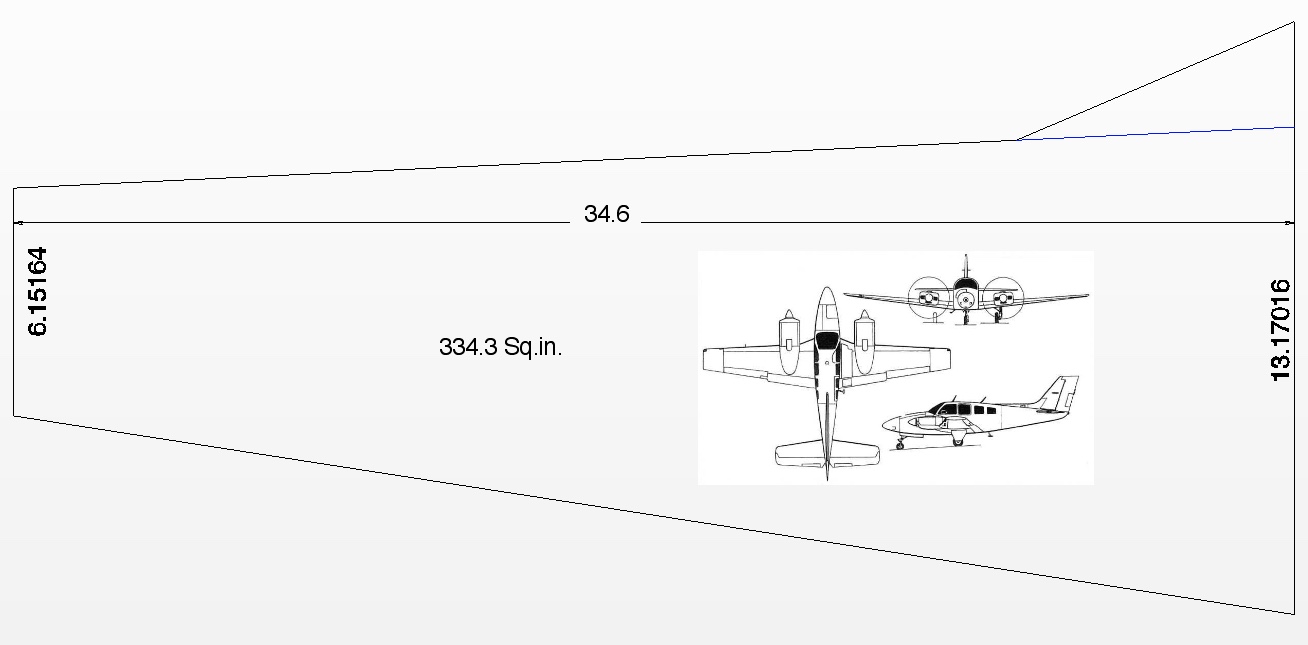 The drawing suggests a wing area of 668.6 sq.in. I’m reasonably sure that the wing on the model is not exactly scale, but I'd say that it is most likely between 650 sq.in. and 700 sq.in.
As Vic said to me in his last email on this topic, "As you stated, this model will still require expert piloting skills." From Burkhard Erdlenbruch, Augsburg, Germany Hi Ken, I just finished reading the new WCL article and now just want to let you know: The Senior Telemaster might be another, maybe even better example than the SR Batteries Eindecker. After all it is nearly as big and so well known that many model flyers can imagine how slow and calm it flies - like a park flyer. It's Wing area is 1330 sq.in., typical weight 10 lb. (160 oz.), and I fly it with 500 W "in". That is plenty of power for this airplane (at least with a 17x12E prop). I calculated a WCL 5.7 and of course 50 W/lb. specific power. The latter would qualify it as a park flyer (according to Common Sense RC's table) and the former as well (according to your table, and even closer to the lower class limit). But in your Electric Flight Basics table you also explicitly mention "slow & relaxed trainers" (not just "some trainers"). That is what the Sr. Telemaster actually is. I found this term quite helpful. For what it's worth. :-) Thanks for the comprehensive WCL update, great article! Burkhard From Ralph Cook Hello Ken, I have written to you a couple of times in the past and you were kind enough to pass the information on. Thanks! I read your original article about cubic wing loading and found it to be more than interesting. It started me thinking. I discovered something about the your discussion and wanted to write, but the theme had past on before I was ready. Now you have taken the subject up again, so I am trying to put my thoughts together, while the subject is still active. There is a branch of scientific study called "Dimensional Analysis". A couple of the more famous results of it are the Prandtl and Reynolds numbers (see Wikipedia). This led me to take a closer look at the units that were being used. You got very close in your new article. As you discussed toward the end of your article, you made clear that there is a difference between mass and force. Wing loading units, as normally used in aircraft modeling, is oz. per sq.ft. and the units in the "WCL" are oz. per cu.ft. The analysis of the wing loading then is "force per unit area" and in the technical community that is called pressure as in "psi". Doing the same for "WCL" you get "mass (force) per unit volume" and that is usually called density. So, re-wording the article you are talking about the pressure or density of an airplane. Using density as the comparison unit makes sense to me, as I think almost everybody would intuitively say that a Styrofoam ball, a cork ball and a steel ball, all are going to fly differently when thrown. Then your Level 1 is something like the Styrofoam ball and Level 7 like the steel ball. A champion shot-putter then is throwing something like flying a Level 7 P-51. Regards,
Upcoming 34th Annual Mid-America Electric Flies 2018
The 7 Mile Rd. Flying Site, Salem Twp., MI, is Provided by the:
Contest Directors are:
Flying both days at the Midwest R/C Society Flying Field - 7 Mile Rd., Salem Twp., MI Registration: 9 A.M. both days
Pilot Entry Fee: 18 and over, $15 Sat. - $10, Sunday, (ask about the family rate),
Saturday's Awards
Sunday's Awards
Planes Must Fly To Be Considered for Any Award
Open Flying Possible on Friday
Potluck picnic at the field on Saturday evening. Come and join us for two days of fun and relaxed electric flying. Come, Look, Listen, Learn - Fly Electric - Fly the Future!
Special Events again for this year for NCM (Not Conventional Materials) aircraft. Traditionally, model aircraft airframes have been mostly constructed from balsa wood, plywood, spruce, and fiberglass. For the purposes of this meet, NCM airframes are mostly constructed from not conventional materials i.e.; sheet foam, foam board, cardboard, block foam, foam insulation material, etc. Foam Flurry for NCM aircraft: This is a true event. It is based upon the all up/last down event of early electric meets. Any NCM aircraft may be used (no ARF types). Power systems are limited to a maximum of 3S (no paralleling) LiPo batteries or 4S maximum, no paralleling, for A123 packs. All planes qualifying for this event will launch at the same time, and the last one to land will be declared the winner. Most Unique NCM Aircraft Award: An award will be given on Sunday to an aircraft in the NCM category that is judged as 'most unique' by the Mid-Am panel of judges. The field entrance is on the north side of Seven Mile Road about 1.6 Miles west of Currie Rd.
Because of their convenient location and the easy drive to the flying field, the Comfort Suites and Holiday Inn Express in Wixom, MI have been added to the hotels' listing. They are only 10 miles northeast of the field and located near I-96 and Wixom Road. See the map-hotel .pdf for more details. The Midwest Priceless Sale at the flying field. No prices on any items. Make a reasonable offer and its yours. Money goes directly to the Midwest RC Society. No charge for space. The $5 requested donation for non-participant entry parking would be appreciated. To Reach Ken Myers, you can land mail to the address at the top of the page. My E-mail address is: KMyersEFO@theampeer.org | ||||
